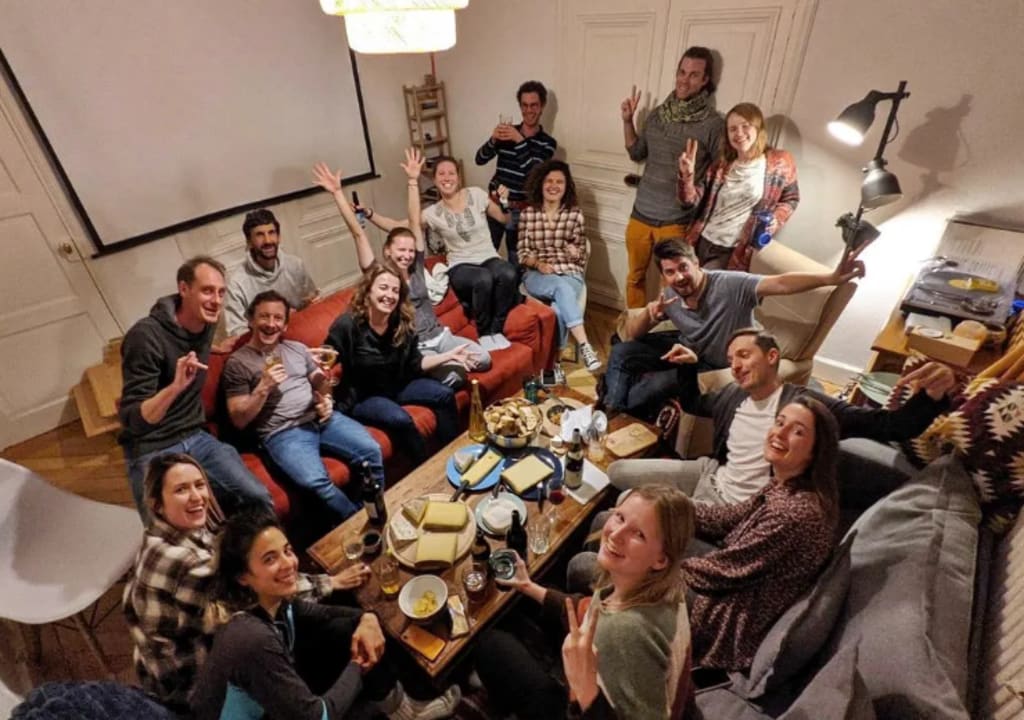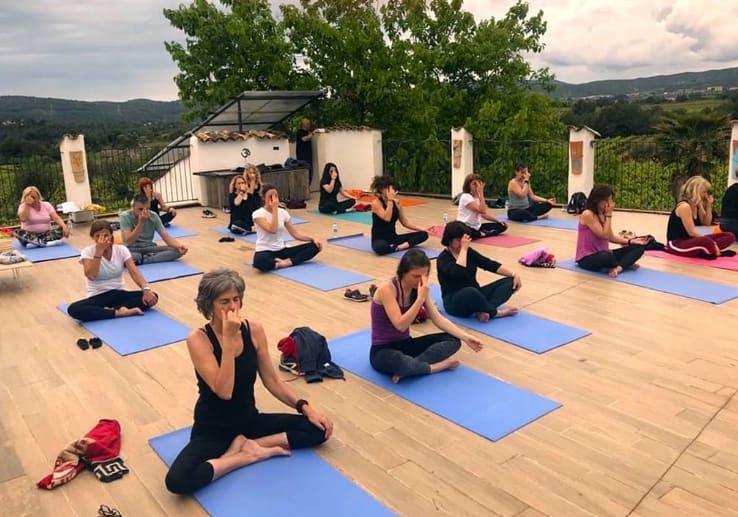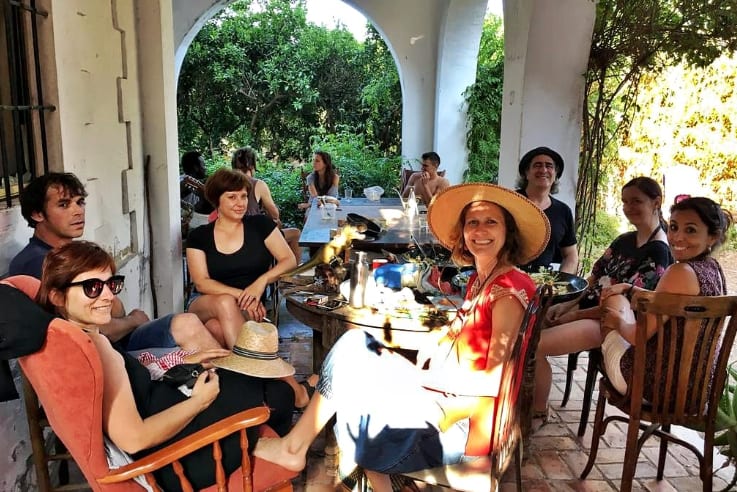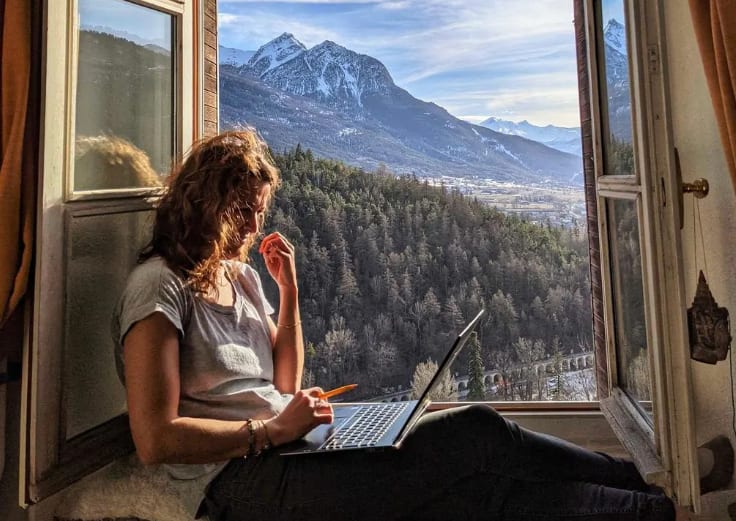What is coliving? Understand the new boom among digital nomads
What is coliving and how is it different from staying in a hostel or shared house? Does it have anything to do with coworking? Understand it all in this article.
7min

Are you wondering what is coliving and why are digital nomads talking about it so much? Although the concept isn’t new, it became much more popular in recent years, with the rise of remote work.
More and more coliving spaces are being created around the world, mainly in tourist cities that are chosen by digital nomads for their low cost of living and interesting attractions, but also in other places such as rural areas.
In this article you’ll understand what is coliving, the main differences between this and other types of housing and how you can stay in one for free as a volunteer.
You might also like to read:
- Unlock the benefits of a remote lifestyle
- Digital nomad resources: how to work while traveling full time
- Countries for digital nomads: a guide with the 22 best

What is coliving and how does it work?
With the success of coworking spaces and the exponential increase in the number of digital nomads traveling the world with their remote jobs, this collaborative housing option has become popular.
Coliving spaces have the same basis of coworking spaces, but aren’t limited to the shared work areas, extending to housing. That is to say, a coliving is a residence in which – mainly - digital nomads live and share common areas where they seek interaction, recreation and the exchange of ideas.
A coliving is not the same as a typical shared house or apartment where each person has their own room and shares the other spaces but may not have anything in common with their flat mates. Those who opt for a coliving do so to be part of a community with similar professional interests.
Another difference is that in many coliving spaces each person has their own apartment, instead of just a room. Some colivings are shared buildings with coworking rooms, library, game rooms, dining rooms etc. There might also be extra services and events like yoga classes or language exchange meetings, all with the aim of creating community.
So when we talk about what is a coliving space, we could say it has some characteristics of a hostel, due to the common spaces for interaction; of a shared house, since those who live there do not come and go as much as in hostels; and of a coworking space, where people usually do professional networking.

How coliving spaces came about
The concept of coliving was born in the Silicon Valley as many young entrepreneurs moved to the area and encountered a housing shortage, which made rental too expensive.
Sharing a living space to address this type of problem was already a common practice around the world, but in this case, there was the intention to unite people with similar interests. The idea was that was not only interesting in economic terms, but also professionally.
Another point in favor of this concept is the smoother bureaucracy. Residents usually don’t have to pay several months’ rent in advance or sign contracts for long periods, since most coliving spaces are designed for short or medium-term stays.
However, it’s good to know that although these spaces originally have as one of its main objectives to offer lower rental costs than traditional lodging options, the colivings in popular digital nomad destinations are not always cheap.
In cities with very expensive rents, such as New York or London, staying in a coliving space is usually cheaper than in a private apartment, what makes it a good option for students or young people relocating without their families.
But in places like Thailand or Mexico, for example, these spaces are aimed at digital nomads who come from countries with much stronger economies than the local one, which increases prices in comparison to other types of housing, making them quite exclusive.
In many cases, coliving spaces are managed by a company or investment fund that provides the space and rents the apartments.

Why should you stay in a coliving space?
As I’ve mentioned, coliving spaces are mainly designed for digital nomads who are moving somewhere for a while and don’t know many people in that destination but are eager to make friends and network.
Since working alone in front of a computer can be boring even if you do it in a dream destination, remote workers often want to interact with people who share the same lifestyle.
Maybe you think that if it’s about meeting people, one could simply stay in a hostel, but working in a place where most people are on vacation or partying is not the best idea, and I say this from my own experience. Even if you go work at a cafe or a coworking space, if everyone around you is on a different vibe you will most likely end up getting distracted.
There are those who prefer to rent an apartment on their own wherever they go, which depending on the city can be even cheaper than a coliving. But as we saw, what makes coliving spaces so special is the possibility of sharing a place with entrepreneurs who are working in projects that may interest you.

Volunteering in a coliving space
Now that you understand what is coliving, you might be excited about it but worried about the cost of staying in such places. The good news is that you can get free accommodation in coliving spaces in many countries.
It’s quite simple: you volunteer for a few hours a day at the place, doing tasks such as cleaning, welcoming guests, preparing breakfast etc. In exchange, you get accommodation and access to coliving services. In many cases meals are also included, but that depends on the agreement you have with the host.
To look for volunteer positions in coliving spaces around the world, browse through the Worldpackers website using the filter "coliving" under "host type".
You don't know Worldpackers yet? This platform was created by digital nomads who wanted to foster collaborative travel, and there you can find volunteering opportunities with different types of hosts in more than 140 countries.
Besides avoiding the cost of accommodation, which is a great way to travel on a budget, you will spend time with travelers from around the globe and with local people too. That will allow you to have a much deeper cultural immersion than you would have if you only passed through the destination as a tourist, and you’ll probably get to know amazing destinations off the beaten path.
Keep reading our blog to understand how Worldpackers works.

Check out some volunteering positions in colivings:
- Coliving in rural Spain
Looking for a peaceful mountain escape? RuralCo Coliving offers a unique opportunity to work just 4 hours a day with weekends off. Daily tasks include guest reception, housekeeping, cooking, and DIY projects such as assembling and painting furniture to create relaxing spaces. Couples are welcome and a private room awaits. Embrace the rural lifestyle surrounded by breathtaking scenery and a warm community in Culla, a small mountain town one hour from Castellón, in Spain.
Here’s the review left by Mercedes, from Greece: “Mi experience at Ruralco was really amazing. For the 4 worldpackers I have done so far, this one was the best. Not only the hosts were extremly nice but also the place and was beautiful. Additionally, we shared hiking, food parties, movies, card games, etc with all the community at the co-living space. We have learnt a lot from the 2 weeks there and would be very happy to recommend this place to any other volunteers”.
- Coliving in Las Palmas de Gran Canaria
Also in Spain, you can be part of the Villa Santa Fe team on the beautiful island of Gran Canaria. This coliving villa is situated in the green part of Las Palmas, called Ciudad Jardin, a few minutes from Playa de las Alcaravaneras, close to the city center and to Playa de Las Canteras. They have 8 rooms and a suite with garden and terrace and their aim is to create a friendly welcoming vibe for digital nomads from around the world.
“My stay was truly life changing. The friendly community, engaging activities like hiking and exploring the south part of the island including visiting wonderful beaches made my experience exceptional. I got a lot of kind support provided for tasks such as cleaning and check-ins. The central location was convenient, with everything close by. I'm eager to return and relive this enriching experience. Highly recommended for a fulfilling and enjoyable stay!”, said Csongor, from Hungary, who volunteered there.
Keep reading:
- 7 jobs you can do while traveling as a digital nomad
- 11 essential apps and websites for digital nomads
- Coliving in the French Alps
What about enjoying the French Alps for free? At the Cloud Citadel coliving they host up to 14 people and define themselves as a mix of hostel, flatshare and coworking space. You will be sharing responsibilities with their team to ensure the smooth running of the place. Your tasks will include help around the house, ensuring the common spaces are clean and tidy and preparing one communal lunch per week.
“It was a fantastic experience. I'm traveling as a digital nomad and this volunteering spot is everything it promises and more. The house is very welcoming, it has a place to work in peace, it is well equipped, several activities are planned, mainly outdoors, and it has a lot of good energy! And the activities we have as volunteers are easy, some days more tasks and others less, more at night and on family lunch days. It was my first time volunteering and I loved it!”, said Eduarda, from Brazil.
- Coliving in Joshua Tree Desert
Searching for a coliving experience within the US? If you are up for a fun desert experience within a global community, then you will love joining the team at ITH Coyote Ranch. They are an intentional community on a small farm in the Joshua Tree desert and offer Coliving for digital nomads. You can volunteer producing social media content in exchange of a free stay and use of their equipped kitchen.

Do you have any questions about what is coliving? Ask us in the comments section! And if you’re interested in more travel tips and inspiration, keep reading our blog and follow us on social media. We’re on Instagram and Tiktok!












Leticia
Feb 14, 2024
Muito bom conteúdo ! Obrigada pelas informações e indicações de alguns lugares
Mano
May 04, 2024
This is Awesome!